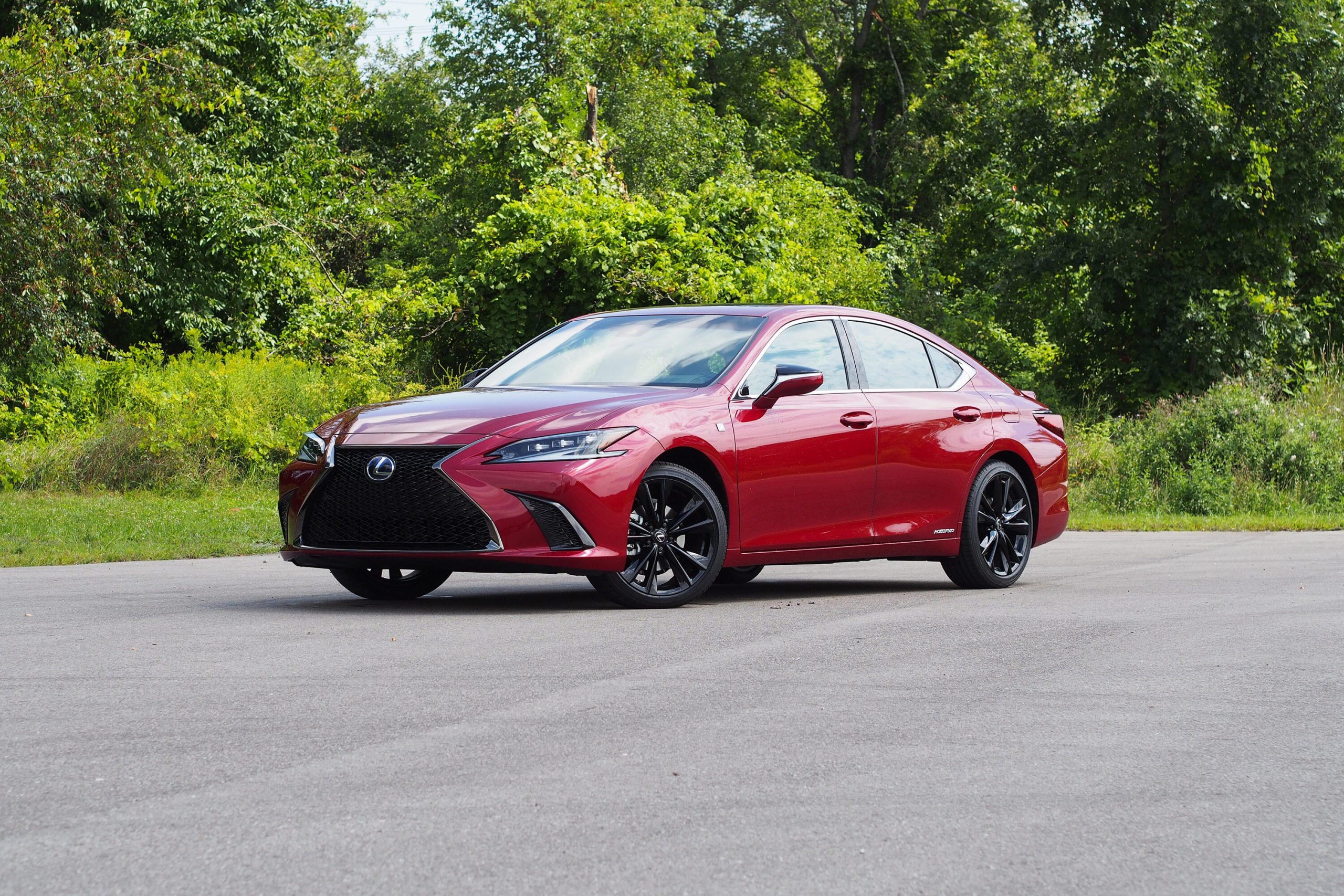The automotive landscape has witnessed a revolutionary transformation with the widespread adoption of hybrid technology, fundamentally altering how we experience vehicle transitions between electric and gasoline power.
Modern hybrid vehicles employ sophisticated powertrains that seamlessly blend electric motors with internal combustion engines, creating a driving experience that can range from whisper-quiet sophistication to occasionally jarring mechanical interruptions.
The quality of these transitions has become a critical differentiator in the hybrid market, influencing everything from consumer satisfaction to brand reputation.
At the heart of every hybrid vehicle lies a complex orchestration of power sources, with engineers striving to create imperceptible shifts between electric and gasoline propulsion.
The most refined systems employ advanced electronic controls, sophisticated battery management, and precision-engineered mechanical components that work in perfect harmony.
These vehicles represent the pinnacle of automotive engineering, where the transition from electric to gasoline power occurs so smoothly that passengers often remain unaware of the switch.
Conversely, some hybrids struggle with abrupt, noticeable transitions that can create an unsettling driving experience, reminding occupants of the mechanical complexity beneath the hood.
The technology behind smooth hybrid transitions involves multiple critical components working in concert. Electronic Continuously Variable Transmissions (e-CVT), advanced engine management systems, and sophisticated hybrid control units must coordinate split-second decisions about when to engage or disengage various power sources.
The most successful implementations utilize predictive algorithms that anticipate driving conditions, pre-positioning the powertrain for optimal transitions.
Sound dampening, vibration isolation, and refined mechanical engineering further contribute to the overall refinement of the hybrid experience, creating vehicles that deliver both efficiency and luxury.
5 Hybrids with the Quietest Switchovers
These exceptionally refined vehicles feature seamless powertrain integration and precision-calibrated engine management systems that deliver imperceptible power source transitions through years of silent electric-to-gasoline switching across diverse driving conditions and operating temperatures.
Their thoughtful engineering includes advanced engine mounts, sophisticated start-stop algorithms, and perfectly balanced motor-generator units that resist the vibration and noise disruptions typically created by abrupt powertrain changes or thermal expansion cycling.
From gentle acceleration scenarios where electric motors yield to gasoline engines to regenerative braking phases that capture energy without audible switching, these remarkable hybrid systems continue operating with whisper-quiet transitions without developing mechanical noise or perceptible power interruptions.
Owners report serene driving experiences with these invisible powertrain changes a refinement-enhancing quality feature that proves its worth through undetectable power source switching and maintained cabin tranquility throughout various driving scenarios.
1. 2025 Toyota Prius (5th Generation)
The 2025 Toyota Prius represents the absolute pinnacle of hybrid transition refinement, setting new standards for seamless power source switching that rivals the smoothness of premium electric vehicles.
Toyota’s decades of hybrid development have culminated in this generation, which features the most advanced Hybrid Synergy Drive system ever created.
The integration between the 2.0-liter four-cylinder engine and dual electric motors is so sophisticated that the majority of transitions occur without any perceptible vibration, sound, or hesitation.
The engineering excellence begins with Toyota’s fourth-generation Hybrid Synergy Drive, which employs a planetary gear system that allows for infinite variability in power distribution.
This system eliminates the traditional gear changes that cause jolts in conventional automatics, instead providing a continuous, smooth power delivery that feels more like an electric vehicle than a traditional hybrid.
The engine’s activation is managed through advanced predictive algorithms that monitor driving patterns, traffic conditions, and battery state to optimize when internal combustion assistance is needed.
Sound engineering plays a crucial role in the Prius’s refined experience. Toyota has invested heavily in acoustic materials throughout the cabin, including specialized sound-dampening foam, acoustic glass, and precision-tuned engine mounts that virtually eliminate engine noise during startup.
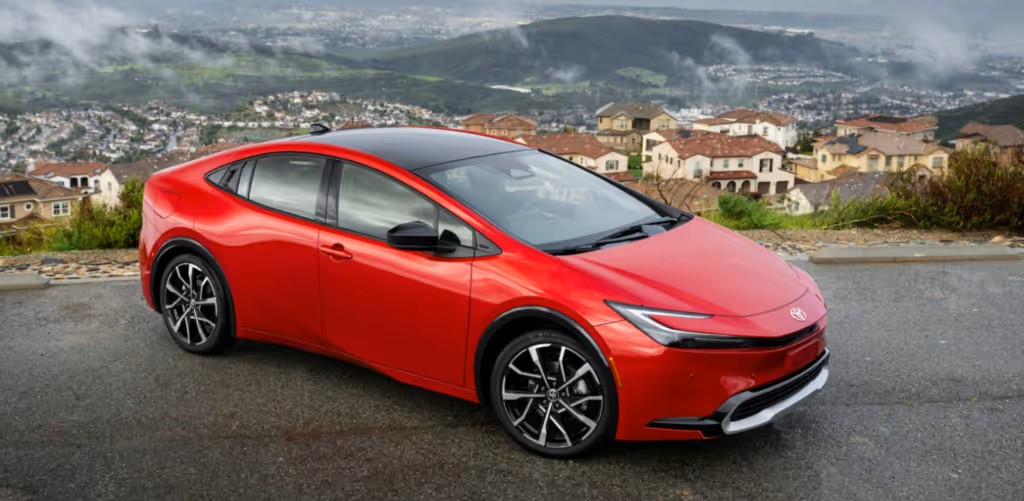
The engine itself features variable valve timing and direct injection technology that allows it to start more quietly than previous generations. When the gasoline engine does engage, it does so with such subtlety that passengers often mistake the moment for a gentle acceleration rather than a power source change.
The vehicle’s Active Noise Control system deserves particular recognition for its contribution to transition smoothness. This technology uses strategically placed microphones to detect engine noise and generates opposing sound waves through the audio system speakers, effectively canceling out unwanted mechanical sounds.
The result is a cocoon of tranquility that maintains its serenity even during the most demanding driving conditions. This sophisticated noise management, combined with the inherently smooth e-CVT transmission, creates an experience that many luxury vehicle owners would envy. Advanced battery management further enhances the transition experience by maintaining optimal charge levels that minimize engine cycling.
The 2025 Prius employs a more efficient lithium-ion battery pack with improved thermal management, allowing for longer electric-only operation and more predictable hybrid system behavior. This reduces the frequency of transitions while ensuring that when they do occur, the system has optimal conditions for seamless operation.
2. 2025 Honda Accord Hybrid
The 2025 Honda Accord Hybrid represents Honda’s most refined approach to hybrid technology, featuring the company’s innovative two-motor hybrid system that delivers transitions so smooth they redefine expectations for midsize sedan refinement.
The 2025 Honda Accord Hybrid tops the list of KBB.com’s best hybrid cars with a rating of 4.8 out of 5 stars, partly due to its exceptional transition quality that rivals luxury vehicles costing significantly more.
Honda’s Intelligent Multi-Mode Drive (i-MMD) system represents a fundamentally different approach to hybrid power management compared to Toyota’s planetary gear system.
The Accord Hybrid uses a direct-drive mechanism at highway speeds, where the gasoline engine directly powers the wheels through a single fixed gear ratio, eliminating the complexity and potential roughness of traditional transmissions.
At lower speeds, the system operates more like a series hybrid, with the gasoline engine primarily serving as a generator for the electric motors that propel the vehicle.
This unique architecture contributes to extraordinarily smooth transitions because the system rarely requires the jarring engagement of mechanical clutches or gear changes.
When additional power is needed, the transition typically involves the electric motors drawing more current from the battery or generator, rather than the mechanical engagement of the gasoline engine to the drivetrain. The result is a power delivery that feels more like gradually increasing the volume on a stereo than engaging mechanical components.

The engineering refinement extends to the engine itself, which features Honda’s Atkinson cycle operation optimized specifically for hybrid duty. This engine design prioritizes efficiency and smooth operation over peak power output, resulting in hushed operation when it does engage.
The engine bay features extensive sound insulation, including a specially designed acoustic hood liner and engine cover that minimize noise transmission to the cabin.
Honda’s integrated approach to hybrid system calibration deserves special recognition. The company’s engineers have programmed the system to learn individual driving patterns and preferences, adapting the transition behavior to match the driver’s style.
Aggressive drivers will experience slightly more immediate engine engagement, while gentle drivers enjoy extended electric-only operation. This personalization, combined with the inherent smoothness of the i-MMD system, creates a driving experience that feels tailored to individual preferences while maintaining exceptional refinement.
The Accord Hybrid’s Active Noise Cancellation system works in conjunction with carefully tuned engine mounts and transmission isolation to create an environment where transitions are not only smooth but virtually silent.
The system uses both passive and active noise control technologies to maintain cabin tranquility, ensuring that even when the gasoline engine is operating, its presence is barely noticeable to occupants.
3. 2025 Lexus ES 300h
The 2025 Lexus ES 300h exemplifies the luxury hybrid experience, combining Toyota’s proven Hybrid Synergy Drive technology with Lexus’s renowned attention to refinement and acoustic comfort.
This vehicle represents the perfect marriage of efficiency and luxury, delivering transitions that are not only smooth but also contribute to an overall sense of premium quality that justifies its position in the luxury segment.
Lexus has taken Toyota’s already impressive hybrid technology and enhanced it with luxury-focused improvements that prioritize occupant comfort and refinement.
The ES 300h features additional sound insulation throughout the cabin, including thicker carpeting, enhanced door seals, and specialized acoustic glass that creates an exceptionally quiet environment. This attention to detail means that even the most sensitive passengers rarely notice when the gasoline engine engages or disengages.
The vehicle’s hybrid system employs a refined version of Toyota’s fourth-generation Hybrid Synergy Drive, calibrated specifically for the luxury market’s expectations.
The system prioritizes smoothness over responsiveness, with transition algorithms that favor gradual power changes over immediate response. This calibration philosophy results in a driving experience that feels more like a luxury electric vehicle than a traditional hybrid, with power delivery that is both seamless and refined.
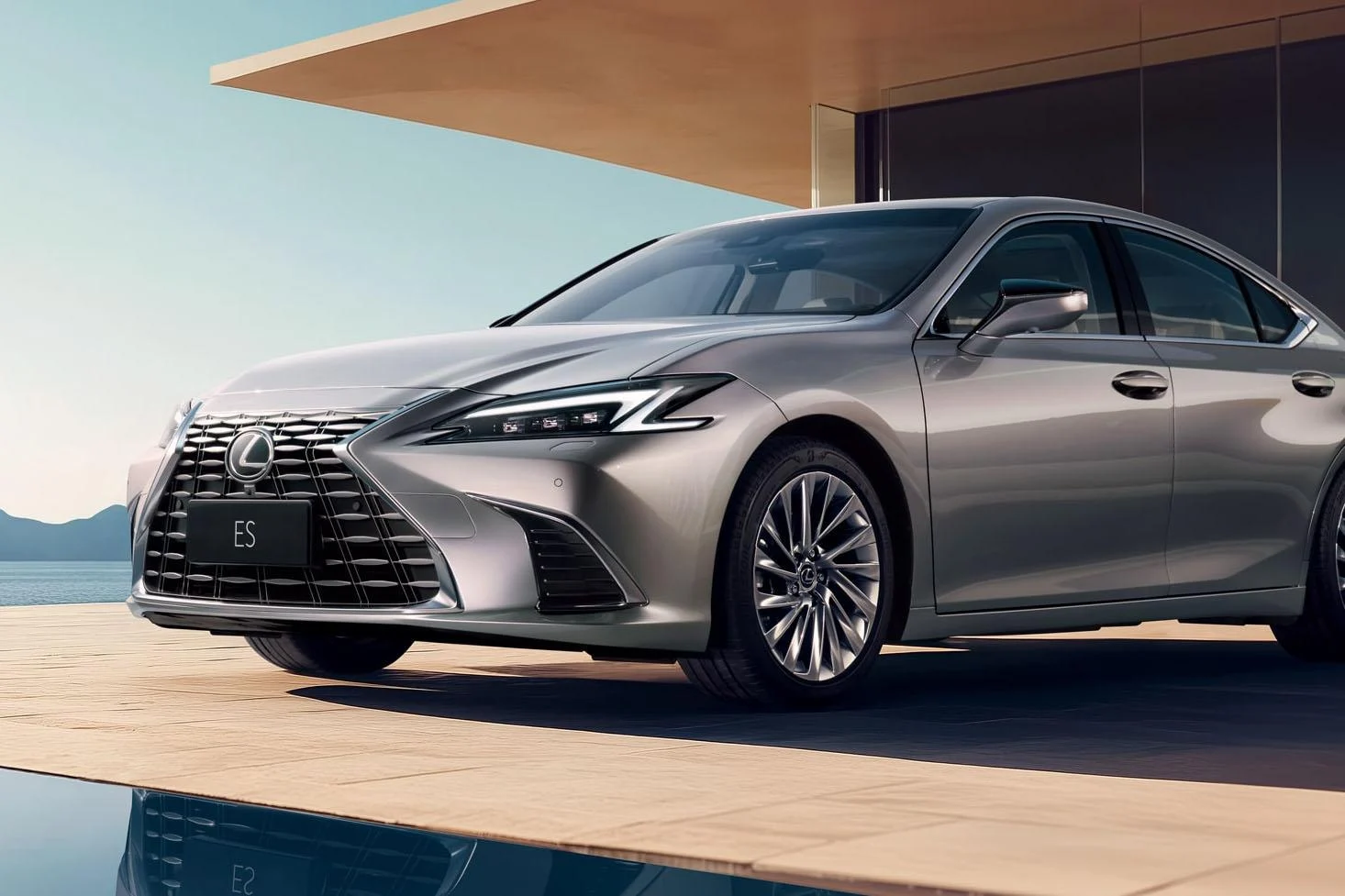
Engine management in the ES 300h represents a masterclass in automotive refinement. The 2.5-liter four-cylinder engine features advanced variable valve timing, direct injection, and Atkinson cycle operation that minimizes both fuel consumption and noise generation.
When the engine does start, it does so with such gentleness that the transition feels more like a gentle wake-up than a mechanical engagement. The engine mounts are specially tuned to minimize vibration transmission, while the exhaust system is designed to be virtually silent during normal operation.
The vehicle’s acoustic engineering extends beyond simple sound dampening to include active noise management technologies borrowed from Lexus’s flagship models.
The ES 300h features strategically placed microphones that monitor cabin noise levels and activate countermeasures when needed. This system works in real-time to maintain the serene environment that Lexus customers expect, regardless of the hybrid system’s operating state.
Interior refinement plays a crucial role in the overall transition experience. The ES 300h’s cabin features materials and construction techniques that absorb and dissipate mechanical vibrations, creating an environment where occupants are isolated from the subtle mechanical activities of the hybrid system.
The seats are designed with vibration-dampening materials, while the dashboard and door panels incorporate sound-absorbing elements that contribute to the overall sense of refinement.
4. 2025 Toyota Camry Hybrid
The 2025 Toyota Camry Hybrid represents the democratization of premium hybrid technology, bringing the refinement typically associated with luxury vehicles to the mainstream midsize sedan market.
The 2025 Toyota Camry is among the highest-rated hybrid cars, earning recognition for its exceptional transition quality that rivals vehicles costing significantly more.
Toyota’s engineering achievement with the Camry Hybrid lies in delivering luxury-level refinement at a mainstream price point. The vehicle employs the same basic Hybrid Synergy Drive technology found in more expensive Lexus models, but with calibrations and components optimized for the Camry’s market position.
The result is a hybrid system that delivers remarkably smooth transitions while maintaining the reliability and efficiency that Toyota hybrids are known for. The Camry Hybrid’s transition quality benefits from Toyota’s decades of experience in hybrid system development and continuous refinement.
The current generation features improved engine isolation, more sophisticated hybrid control algorithms, and enhanced sound management compared to previous versions. These improvements result in transitions that are not only smooth but occur at optimal times to maximize both efficiency and occupant comfort.
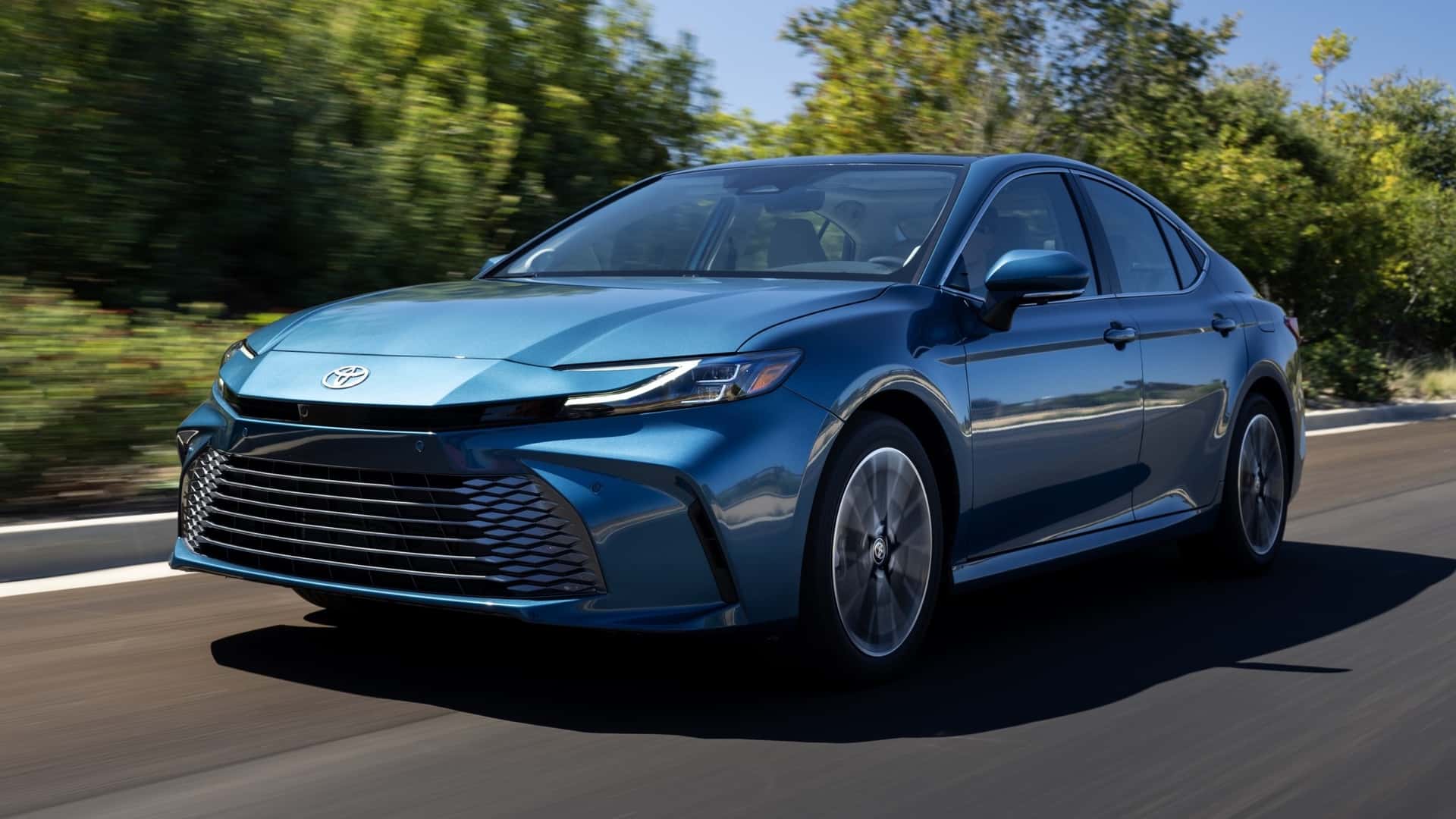
Engine technology in the Camry Hybrid focuses on achieving an optimal balance between power, efficiency, and refinement. The 2.5-liter four-cylinder engine features Toyota’s latest Atkinson cycle technology, variable valve timing, and direct injection systems that allow for remarkably quiet operation.
The engine’s start-stop behavior is managed through advanced algorithms that consider factors such as engine temperature, battery state, and immediate power demands to minimize the frequency and abruptness of transitions.
The vehicle’s acoustic engineering represents a significant advancement over previous generations, with improved sound insulation throughout the cabin and carefully tuned engine mounts that minimize vibration transmission.
The Camry Hybrid features specialized acoustic materials in the firewall, floor pan, and roof that create a surprisingly quiet environment for a mainstream vehicle. This attention to acoustic comfort ensures that hybrid system transitions remain unobtrusive even during extended highway driving.
Advanced battery management contributes significantly to the Camry Hybrid’s smooth operation. The vehicle employs a sophisticated lithium-ion battery pack with improved thermal management and more precise charge control, allowing for more predictable hybrid system behavior.
This results in fewer unexpected transitions and more consistent performance across various driving conditions, contributing to the overall sense of refinement that sets the Camry Hybrid apart from many competitors.
Also Read: 5 Trucks With the Best LED Bed Lighting and 5 With Dim Lamps
5. 2025 Toyota RAV4 Hybrid
The 2025 Toyota RAV4 Hybrid demonstrates that smooth hybrid transitions are not limited to sedans, bringing exceptional refinement to the competitive compact SUV segment.
The Toyota RAV4 Hybrid is the best-selling hybrid SUV in the country, providing smoother power delivery and superior performance, with transitions that rival those found in luxury vehicles. Toyota’s achievement with the RAV4 Hybrid lies in adapting its proven hybrid technology to the unique challenges of SUV applications.
The higher seating position, different aerodynamics, and increased weight of SUV design could potentially make hybrid transitions more noticeable, but Toyota’s engineering team has successfully maintained the smooth operation that characterizes their best hybrid implementations.
The result is a vehicle that delivers SUV versatility without sacrificing the refined driving experience. The RAV4 Hybrid’s all-wheel-drive system adds complexity to the hybrid powertrain, but Toyota has managed this additional complexity while maintaining exceptional transition quality.
The system employs a rear electric motor that provides instant torque to the rear wheels when needed, creating a seamless power delivery that feels more integrated than traditional mechanical all-wheel-drive systems.
This electric rear motor eliminates the need for a traditional transfer case and drive shaft, reducing mechanical complexity and potential sources of vibration or noise.
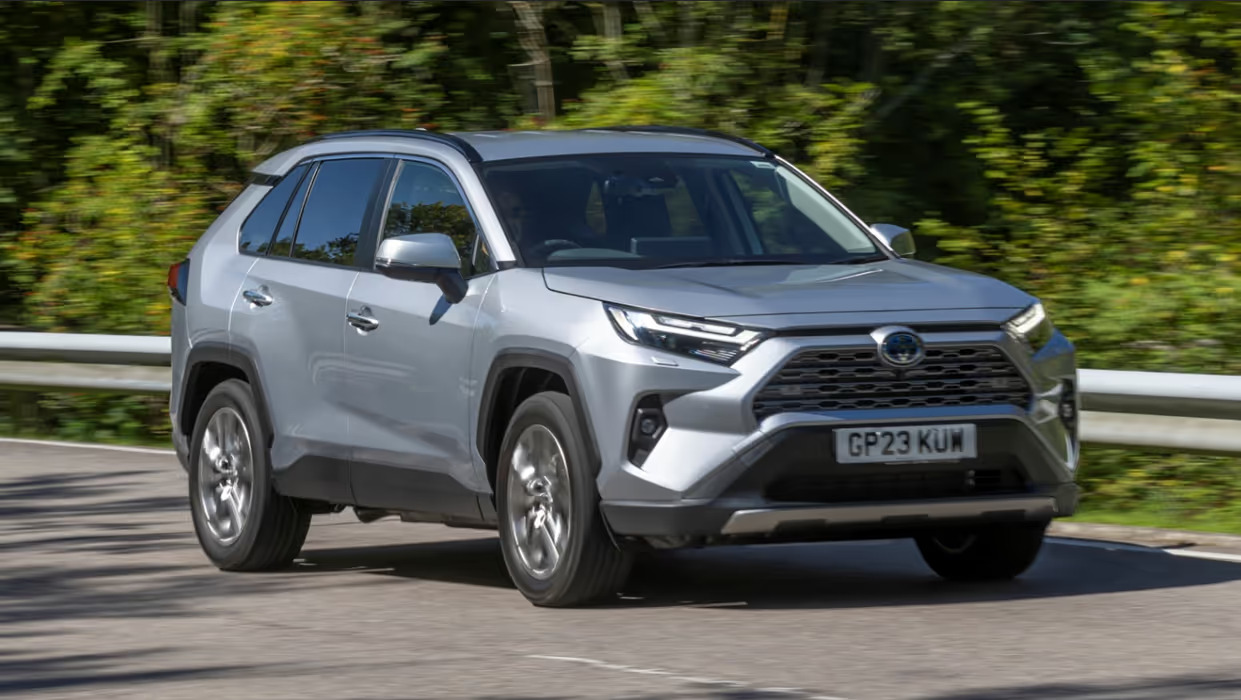
Sound management in the RAV4 Hybrid represents a significant engineering achievement given the challenges of SUV acoustics. The vehicle features extensive sound insulation throughout the cabin, including specialized materials in the floor pan, door panels, and roof that create a surprisingly quiet environment.
The engine bay features acoustic treatments that minimize noise transmission to the cabin, while the exhaust system is tuned to be virtually silent during normal hybrid operation.
The vehicle’s hybrid system calibration is optimized for SUV duty cycles, with algorithms that anticipate the higher power demands associated with SUV driving.
This predictive approach results in smoother transitions because the system can prepare for power demands before they occur, rather than reacting to them.
The result is a hybrid system that feels more integrated and responsive than many competitors, with transitions that enhance rather than detract from the driving experience.
Advanced all-wheel-drive integration sets the RAV4 Hybrid apart from many competitors. The system’s ability to seamlessly distribute power between front and rear wheels, combined with the instant torque delivery of electric motors, creates a driving experience that feels more sophisticated than traditional mechanical systems.
This integration contributes to the overall smoothness of the hybrid system, as power delivery remains consistent regardless of driving conditions or traction demands.
5 Hybrids with Clunky Transitions
These jarring hybrid vehicles create noticeable powertrain disruptions due to poorly calibrated switching logic and inadequate vibration dampening that produces audible clunks, perceptible hesitation, and mechanical noise during electric-to-gasoline power transitions throughout normal driving operations.
Their problematic engineering includes aggressive engine startup sequences, insufficient motor synchronization, and basic mounting systems that amplify the switching disturbances typically associated with mismatched power delivery timing or thermal cycling effects.
From startling engine engagement during quiet electric operation to noticeable power gaps during acceleration transitions, these hybrid drivetrains demand tolerance through constant switching awareness and reduced refinement.
Owners discover that while these vehicles offer hybrid fuel economy benefits, their powertrain transitions create a less polished driving experience with frequent mechanical reminders of their dual-power complexity that diminish the expected seamless operation of modern hybrid technology.
1. 2024 Nissan Rogue Hybrid (e-POWER)
The 2024 Nissan Rogue Hybrid represents a unique approach to hybrid technology that, while innovative in concept, delivers one of the most noticeable and sometimes jarring transition experiences in the current hybrid market.
Nissan’s e-POWER system employs a series hybrid architecture where the gasoline engine serves solely as a generator for the electric motors, never directly driving the wheels. While this concept promises the smoothness of electric drive, the reality is often quite different due to the system’s calibration and the engine’s behavior patterns.
The fundamental issue with the Rogue Hybrid’s transition quality stems from the engine’s role as a generator that must frequently start and stop to maintain battery charge.
Unlike traditional hybrids, where the engine can remain running at low loads, the e-POWER system tends to operate the engine in distinct on-off cycles. When the engine starts, it does so with a noticeable vibration and sound that can be startling to passengers, particularly because the system often engages the engine at seemingly random times rather than in response to immediate power demands.
Nissan’s calibration of the e-POWER system prioritizes efficiency over refinement, resulting in engine operation that can feel disconnected from the driver’s intentions.
The engine may start during gentle cruising when the battery charge drops below a certain threshold, creating a jarring contrast between the silent electric operation and the sudden mechanical noise. This unpredictability makes the transition feel less refined than systems that operate more predictably in response to driver inputs.
The engine itself contributes to the rough transition experience through its design and mounting. The 1.5-liter three-cylinder engine in the Rogue Hybrid has inherent vibration characteristics that are difficult to completely eliminate, particularly during startup.
Three-cylinder engines naturally have a rougher idle quality compared to four-cylinder units, and this roughness is transmitted through the vehicle structure during transitions. The engine mounts, while adequate for normal operation, cannot completely isolate the cabin from the three-cylinder’s characteristic vibrations.
Sound insulation in the Rogue Hybrid, while reasonable for the price point, is insufficient to mask the engine’s operation during transitions. The acoustic materials used throughout the cabin are adequate for highway noise but cannot eliminate the engine’s presence during startup.
This is particularly noticeable because the contrast between silent electric operation and engine operation is so stark, making even moderate engine noise seem intrusive.
The vehicle’s hybrid control system lacks the sophistication found in more refined competitors. The algorithms that determine when to start and stop the engine appear to prioritize battery state over occupant comfort, resulting in engine operation that can feel arbitrary.
The system doesn’t seem to learn from driving patterns or anticipate power needs, instead reacting to immediate battery charge levels. This reactive approach results in engine starts that feel sudden and unexpected rather than smooth and anticipated.
Battery management in the Rogue Hybrid contributes to the transition issues through its relatively small capacity and conservative charging strategy. The system maintains the battery within a narrow charge range, requiring frequent engine operation to maintain optimal levels.
This frequent cycling creates more opportunities for jarring transitions, as the engine must start and stop more often than in systems with larger battery capacities or more sophisticated charge management.
2. 2024 Hyundai Sonata Hybrid
The 2024 Hyundai Sonata Hybrid, while offering competitive fuel economy and attractive styling, suffers from transition quality issues that detract from the overall driving experience.
The vehicle employs a traditional parallel hybrid system with a turbocharged 1.6-liter four-cylinder engine paired with an electric motor, but the integration between these power sources lacks the refinement found in the best hybrid implementations.
The primary issue with the Sonata Hybrid’s transitions lies in the calibration of its 6-speed automatic transmission, which must manage the complex interaction between the gasoline engine and electric motor.
Unlike the seamless e-CVT systems used by Toyota and Honda, the Sonata Hybrid’s conventional automatic transmission creates distinct shift points that can be felt during hybrid operation.
These shifts are particularly noticeable when the system is transitioning between different power sources, creating a layered complexity of both power source changes and transmission shifts.
Engine behavior in the Sonata Hybrid contributes significantly to the rough transition experience. The turbocharged 1.6-liter engine has a distinct character that includes turbo lag and a somewhat abrupt power delivery that doesn’t blend seamlessly with the electric motor’s smooth torque curve.
When the engine engages, particularly from a stop or during acceleration, there’s often a noticeable surge as the turbocharger spools up, creating an uneven power delivery that feels less refined than naturally aspirated hybrid systems.
The vehicle’s hybrid system calibration appears to prioritize performance over smoothness, resulting in more aggressive engine engagement than many competitors.

The system tends to call upon the gasoline engine quickly during acceleration, rather than maximizing electric-only operation. This approach creates more frequent transitions and makes each transition more noticeable, as the engine often engages with a distinct surge of power that can be felt through the accelerator pedal and heard in the cabin.
Transmission integration represents one of the Sonata Hybrid’s most significant challenges. The 6-speed automatic must coordinate with the hybrid system’s power management, creating scenarios where transmission shifts occur simultaneously with power source changes.
This can result in confusing sensations where the vehicle seems to hesitate, surge, or shift unexpectedly. The transmission’s programming doesn’t seem optimized for hybrid operation, instead feeling like a conventional automatic that has been adapted for hybrid duty.
Sound management in the Sonata Hybrid is adequate but not exceptional, allowing engine noise and transmission sounds to be more prominent than in the best hybrid implementations.
The turbocharged engine has a distinct sound signature that becomes noticeable during transitions, while the transmission can produce subtle whining or shifting sounds that add to the overall impression of mechanical complexity rather than seamless operation.
The vehicle’s battery management system, while functional, doesn’t provide the sophisticated charge optimization found in more refined hybrids. The system tends to maintain battery charge within a relatively narrow range, requiring more frequent engine operation and creating more opportunities for rough transitions.
The regenerative braking system, while effective, can feel grabby and inconsistent, adding to the overall impression of a hybrid system that hasn’t achieved optimal integration.
3. 2024 Kia Sorento Hybrid
The 2024 Kia Sorento Hybrid represents Kia’s entry into the three-row hybrid SUV market, but its transition quality reveals the challenges of implementing hybrid technology in larger, heavier vehicles.
While the Sorento Hybrid offers the space and capability that families need, its hybrid system delivers one of the more noticeable and sometimes jarring transition experiences in the SUV segment.
The fundamental challenge with the Sorento Hybrid stems from the vehicle’s size and weight, which demand more frequent and more aggressive engine operation compared to smaller hybrids.
The 1.6-liter turbocharged four-cylinder engine, while adequate for the vehicle’s power needs, must work harder to move the Sorento’s 4,400-pound mass, resulting in more noticeable engine operation during transitions.
The turbocharger adds complexity to the power delivery, creating lag and surge characteristics that don’t blend seamlessly with the electric motor’s smooth torque curve.
The vehicle’s 6-speed automatic transmission, similar to the Sonata Hybrid, creates additional complexity during hybrid transitions. The transmission must manage the interaction between the gasoline engine and electric motor while also providing appropriate gear ratios for the SUV’s varied driving conditions.
This results in scenarios where transmission shifts occur during power source transitions, creating a double-layered complexity that can feel rough and mechanical rather than smooth and seamless.
Engine behavior in the Sorento Hybrid is particularly noticeable due to the vehicle’s size and the engine’s workload. The turbocharged 1.6-liter engine must frequently operate at higher loads to provide adequate power for SUV duties, resulting in more noticeable engine operation during transitions.
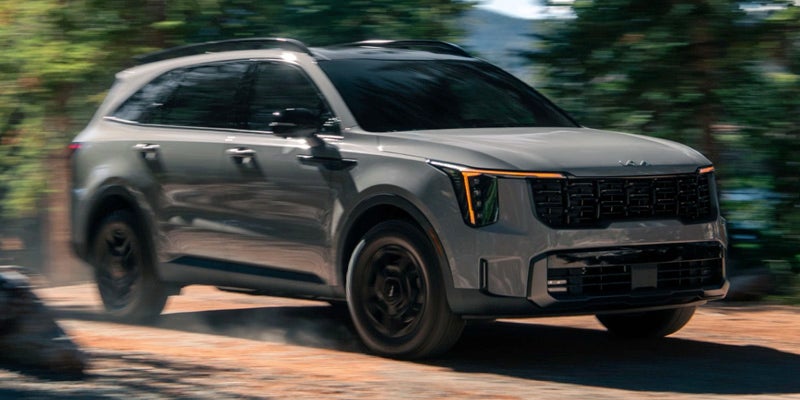
The turbocharger’s spool-up characteristics create a delayed but then sudden surge of power that doesn’t integrate smoothly with the electric motor’s immediate torque delivery.
Sound insulation in the Sorento Hybrid, while reasonable for the price point, is insufficient to completely mask the engine’s operation during transitions.
The larger cabin volume of the SUV makes it more challenging to achieve the acoustic isolation found in smaller vehicles, and the engine’s operation becomes more noticeable as a result.
The transmission also contributes to the acoustic signature, with shifting sounds that can be heard during transitions. The hybrid system’s calibration appears to prioritize capability over refinement, resulting in more aggressive engine operation than might be necessary for optimal smoothness.
The system tends to engage the gasoline engine quickly during acceleration or when climbing grades, creating frequent transitions that become noticeable over time. This approach is understandable given the SUV’s intended use, but it comes at the cost of the seamless operation found in more refined hybrid systems.
Battery management in the Sorento Hybrid faces the challenge of supporting a large, heavy vehicle with a relatively small battery pack. The system must frequently cycle the engine to maintain adequate charge levels, creating more opportunities for noticeable transitions.
The regenerative braking system, while effective, can feel inconsistent and grabby, particularly when descending grades or during aggressive deceleration.
4. 2024 Honda CR-V Hybrid
The 2024 Honda CR-V Hybrid presents a puzzling case in hybrid refinement, as Honda’s typically excellent hybrid technology doesn’t achieve the same level of smoothness in the CR-V that it demonstrates in the Accord Hybrid.
While the CR-V Hybrid employs Honda’s proven i-MMD two-motor hybrid system, the implementation in the SUV format results in more noticeable transitions and a less refined overall experience.
The primary issue appears to stem from the calibration differences between the CR-V and Accord implementations of Honda’s hybrid system. The CR-V Hybrid’s system seems tuned for more aggressive engine operation, possibly to provide the power and responsiveness expected in an SUV.
This results in more frequent engine engagement and more noticeable transitions, particularly during acceleration or when climbing grades. The engine tends to start more abruptly and operate more prominently than in Honda’s sedan applications.
Engine behavior in the CR-V Hybrid lacks the refined character found in the Accord Hybrid. The 2.0-liter four-cylinder engine, while smooth in operation once running, has a more pronounced startup procedure that can be felt and heard in the cabin.
The engine mounts and isolation systems don’t seem as effective as those in the Accord, allowing more vibration and noise to reach the passenger compartment during transitions.
The vehicle’s all-wheel-drive system adds complexity to the hybrid operation, potentially contributing to a less refined transition experience. The mechanical all-wheel-drive system requires additional power and creates additional drivetrain complexity that may interfere with the smooth operation of the hybrid system.
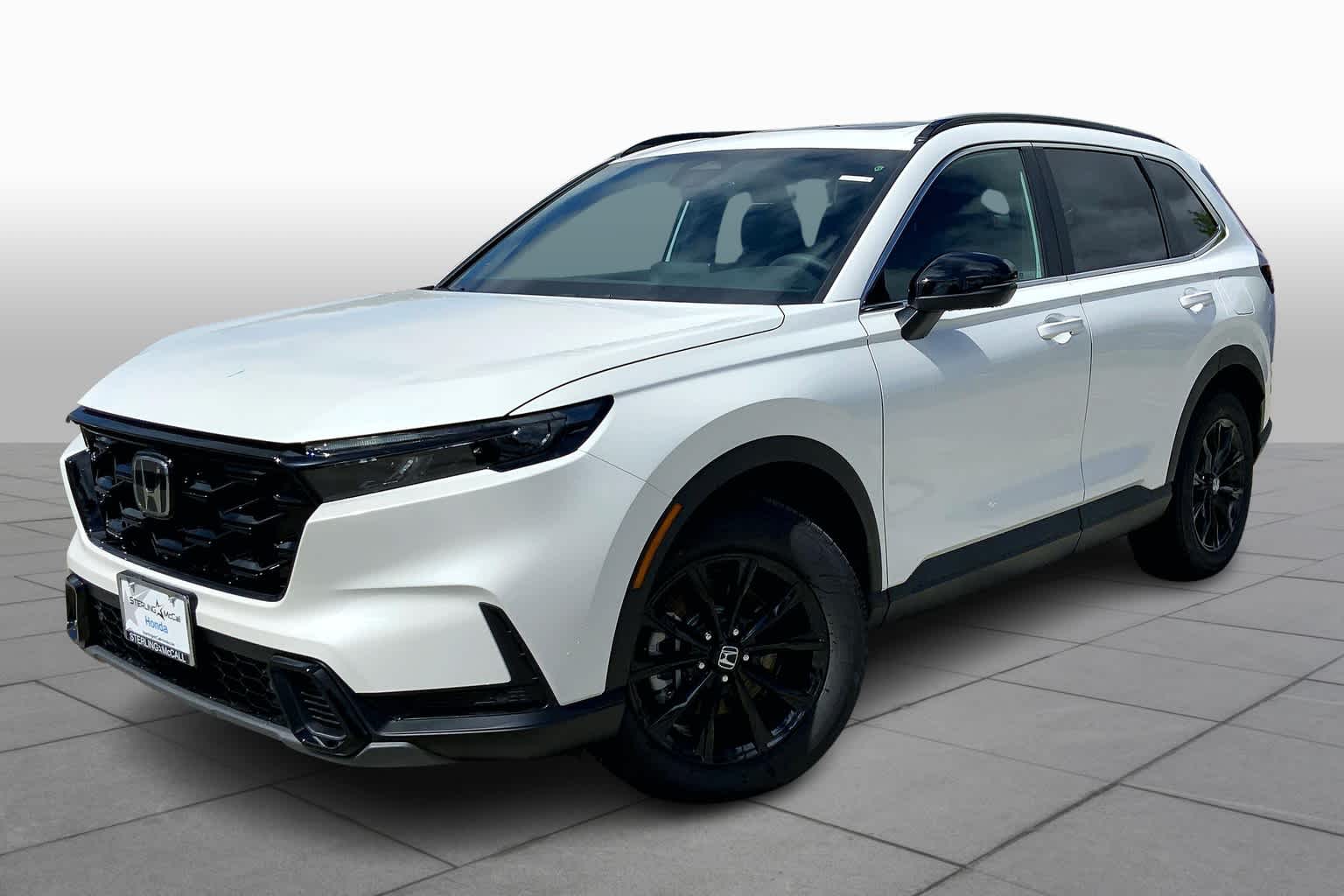
The system’s operation can be felt through the drivetrain during transitions, creating additional sensations that detract from the seamless experience.
Sound management in the CR-V Hybrid is adequate but not exceptional, allowing engine and drivetrain sounds to be more prominent than in Honda’s best hybrid implementations.
The SUV’s larger cabin and different acoustic properties compared to the Accord result in a less controlled sound environment. Engine noise during startup and operation is more noticeable, while drivetrain sounds from the all-wheel-drive system can be heard during transitions.
The hybrid system’s integration with the all-wheel-drive system creates additional opportunities for rough transitions. The system must coordinate not only between the gasoline engine and front electric motor but also manage power distribution to the rear wheels through the mechanical all-wheel-drive system.
This added complexity can result in drivetrain sounds and sensations that make transitions more noticeable and less refined. Calibration differences between the CR-V and Accord hybrids suggest that Honda has prioritized SUV-appropriate performance over maximum refinement.
The CR-V Hybrid’s system engages the gasoline engine more readily and operates it more aggressively, resulting in more noticeable transitions but potentially better SUV-appropriate performance. This trade-off, while understandable, results in a less refined hybrid experience than Honda’s best implementations.
5. 2024 Ford Escape Hybrid
The 2024 Ford Escape Hybrid represents Ford’s attempt to compete in the compact hybrid SUV segment, but its transition quality reveals the challenges faced by manufacturers who are newer to hybrid technology.
While the Escape Hybrid offers competitive fuel economy and attractive pricing, its hybrid system delivers one of the more noticeable and sometimes rough transition experiences in the segment.
Ford’s hybrid system in the Escape employs a 2.5-liter Atkinson-cycle four-cylinder engine paired with an electric motor and a continuously variable transmission (CVT).
While this configuration should theoretically provide smooth operation, the calibration and integration of these components result in transitions that feel less refined than the best competitors.
The engine’s operation is more noticeable than in competing systems, with startup and shutdown procedures that can be felt and heard in the cabin.
The CVT transmission in the Escape Hybrid, while smoother than a conventional automatic, doesn’t achieve the seamless operation of the e-CVT systems used by Toyota and Honda.
Ford’s CVT has a distinct character that includes some noise and vibration during operation, particularly under load. The transmission’s behavior during hybrid transitions can feel somewhat artificial, with engine RPM that doesn’t always correlate intuitively with the vehicle’s acceleration or the driver’s inputs.
Engine behavior represents one of the Escape Hybrid’s most significant challenges. The 2.5-liter Atkinson-cycle engine, while efficient, has a somewhat coarse character that becomes noticeable during transitions.
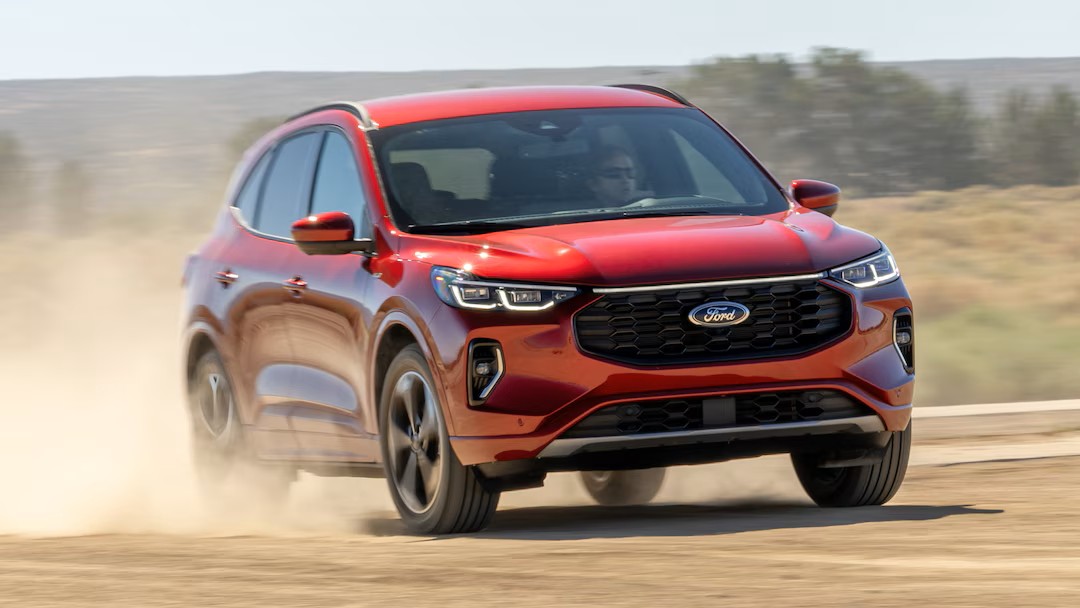
The engine’s startup procedure is more abrupt than in competing systems, with vibration and noise that can be startling to passengers who have become accustomed to silent electric operation. The engine mounts and isolation systems seem inadequate to completely smooth the transition experience.
Hybrid system calibration in the Escape appears to prioritize fuel economy over refinement, resulting in engine operation patterns that can feel disconnected from the driver’s intentions.
The system may start the engine at unexpected times or allow it to run longer than seems necessary, creating an impression of less sophisticated control algorithms compared to more refined competitors. The predictive capabilities of the system seem limited, with the engine operating reactively rather than proactively.
Sound insulation in the Escape Hybrid is competitive for the price point but insufficient to completely mask the engine’s operation during transitions.
The acoustic materials used throughout the cabin are adequate for normal driving but cannot eliminate the engine’s presence during startup and operation. The CVT transmission also contributes to the acoustic signature, with operational sounds that can be heard during transitions and acceleration.
Battery management in the Escape Hybrid appears less sophisticated than in competing systems, with charge management that requires more frequent engine operation.
The system maintains battery charge within a relatively narrow range, necessitating more frequent engine cycling and creating more opportunities for noticeable transitions.
The regenerative braking system, while functional, can feel inconsistent and sometimes grabby, adding to the overall impression of a hybrid system that hasn’t achieved optimal integration and refinement.
Also Read: 5 EVs With the Best Torque Delivery and 5 With Lag

